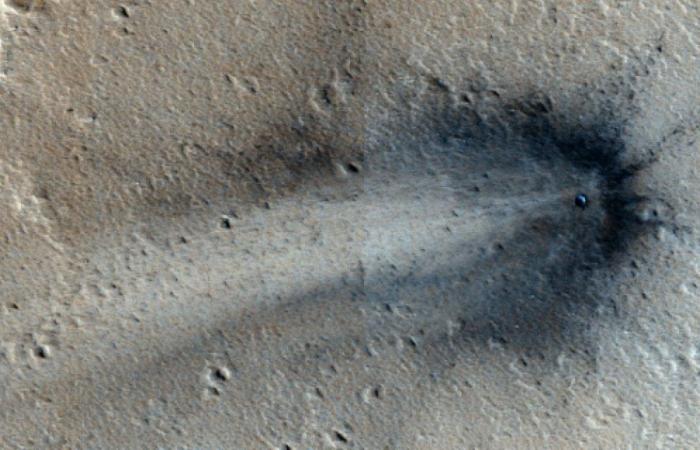Mars is subject to almost daily meteorite impacts, with approximately five times more impacts than previously estimated, according to seismic recordings made on the red planet.
Until now, we estimated the frequency of these impacts with models combining observations of meteorite craters on the Moon and images of the Martian surface taken by orbiting probes.
These models were adjusted to the characteristics of the red planet. Much more massive than the Moon, and much closer to the main asteroid belt of the solar system, Mars is a prime target for large rocks wandering through space.
Furthermore, almost devoid of atmosphere – its own is a hundred times thinner than that of the Earth – it cannot even count on this protective shield to disintegrate some of the meteorites.
An international team, led by researchers from the Zurich Polytechnic School (ETH) and Imperial College in London, provides a new look at the subject in the journal Nature Astronomy published on Friday, thanks to sound.
“It seems more effective to listen to the impacts than to try to see them if we want to understand how often they occur,” said Gareth Collins, co-author of the study and professor at Britain’s Imperial College, in a press release from his institution.
And what could be better than the SEIS seismograph (Seismic Experiment for Internal Structure), an instrument produced under the supervision of CNES (National Center for Space Studies).
A NASA probe, InSight, landed it in November 2018 on the Martian plain of Elysium, allowing humanity to put its ear to the planet’s surface for the first time. The initial objective was to measure its internal activity and possible seismic events.
– “Hear every impact” –
The team of researchers used this data to determine that the planet is hit each year by 280 to 360 meteorites creating craters at least eight meters in diameter. “This rate is five times higher than the number estimated from images taken in orbit alone,” explains Géraldine Zenhäusern, researcher at ETH, in a press release from her establishment.
Identifying small meteorite craters from an orbiting probe is all the more difficult because the planet is the scene of frequent sandstorms that can mask them.
“While the new craters may stand out better on flat, dusty terrain, that kind of terrain only covers half the planet,” Zenhäusern said. The advantage of the seismograph was that “you could hear every impact within range of the probe.”
The team’s calculations are based on the identification of a particular type of acoustic waves, which propagate on the surface of Mars when the meteorite impacts. These events, called Marsquake-VF (high-frequency Marsquakes), made it possible to estimate the diameter of a crater and its distance from the probe.
Then calculate the number of craters created in one year within a certain radius around the probe, before extrapolating this data to the scale of the planet.
“This is the first study of this kind to determine with seismological data the frequency of meteorite impacts on the surface of Mars,” notes ETH professor Domenico Giardini.
Data “to be taken into account in planning future missions to Mars”, according to him. The planet is struck approximately every month by a meteorite creating a crater at least 30 meters in diameter…






